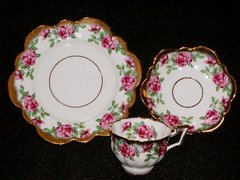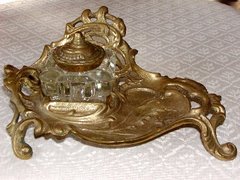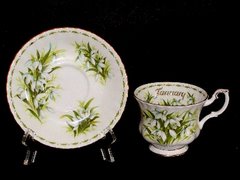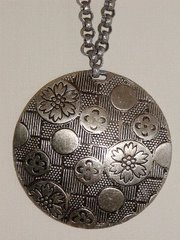
You can't miss it...you know what it is immediately. That beautifully lustrous - sometimes even iridescent - metallic sheen on porcelain pieces of varying colors can be nothing but lustreware. That tell-tale finish is created by the addition of a thin film of metallic oxides (sometimes copper and silver) over a glaze, which is then fired. Probably the best known and maybe the most commonly seen today are those made in Japan, and they include everything from salt and pepper sets to tea sets to jugs and bowls. But did you know that lustreware may have originated as early as the 9th century?
Pottery experts say that the most beautiful and colorful lustreware was found in Samarra, made in the 9th century by Islamic potters. In later centuries it was made in Iran, Egypt, Spain, Italy, England, and Japan.
Lustreware is a pretty popular collectible and can range quite a bit in price, even though back around the 1920s-1940s, those that were imported from Japan were considered inexpensive dime-store stuff (not anymore!). The most common lustreware colors we find today are orange and blue, but there's also mother-of-pearl, pink, yellow and copper. English lustre is generally more expensive than Japanese. Most English lustreware was made during the first half of the 19th century and is highly collectible; today, you'll usually only see a good quantity of it come onto the market when a collection is being dismantled and sold.
You can find a nice selection of lustreware at Collector's Cottage - just click on the link in the right sidebar for China and Porcelain.
Pottery experts say that the most beautiful and colorful lustreware was found in Samarra, made in the 9th century by Islamic potters. In later centuries it was made in Iran, Egypt, Spain, Italy, England, and Japan.
Lustreware is a pretty popular collectible and can range quite a bit in price, even though back around the 1920s-1940s, those that were imported from Japan were considered inexpensive dime-store stuff (not anymore!). The most common lustreware colors we find today are orange and blue, but there's also mother-of-pearl, pink, yellow and copper. English lustre is generally more expensive than Japanese. Most English lustreware was made during the first half of the 19th century and is highly collectible; today, you'll usually only see a good quantity of it come onto the market when a collection is being dismantled and sold.
You can find a nice selection of lustreware at Collector's Cottage - just click on the link in the right sidebar for China and Porcelain.




No comments:
Post a Comment